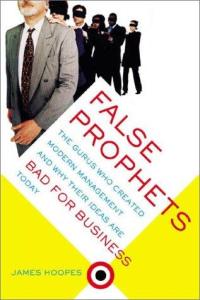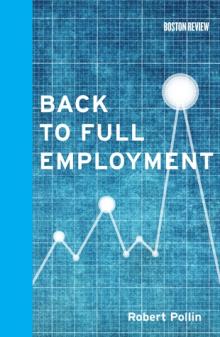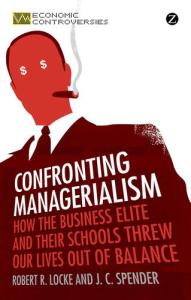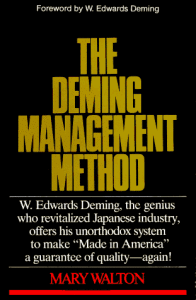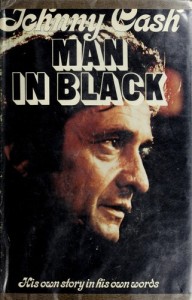
Mary Walton – The Deming Management Method (Dodd, Mead 1986)
Mary Walton is a journalist who wrote a sympathetic (and authorized) book summarizing the key points of W. Edwards Deming‘s management methods, primarily as taught in the regular seminars he gave on the topic. Deming wrote books himself. The best-known is Out of the Crisis (1982). A question that surely comes to mind here is, “Why read a journalist’s summary of Deming’s seminars when I could just read Deming myself?” Well, Deming was a theorist and a practitioner — currently unavailable for seminars due to his death in 1993. As a writer, his prose could be choppy, repetitive and rambling. This is a quality of many theorists — Deming preferred researchers to pure teachers unconnected to innovative research, writing “that the prime requirement for a teacher is to possess some knowledge to teach” and that “[n]o lustre of personality can atone for teaching error instead of truth.” Certainly, readers can go directly to Deming’s writings. But Deming really made a name for himself giving four-day seminars and doing consulting directly with companies. During his lifetime, most acolytes learned from him in person rather than through his books. Therefore, Walton’s book is useful for readers who want a high-level summary, and, above-all, something that is easy to read. Moreover, this book is suited for readers who wish to approach the subject on their own, without hiring a consultant versed in the Deming Management Method or taking one of their seminars.
There are many, many, many books on Deming, offering extensions, reformulations, and other addenda to his work. Walton’s book has remained one of the best-known and most popular of them. That is largely because it is one aimed at the most general audience. If you are looking for case studies, Walton wrote another book, Deming Management at Work (1990) on that topic. Other books give you more on the statistical methods, particularly Deming’s own writings. Others are written more like guidebooks to accompany consulting seminars, like Four Days With Dr. Deming: A Strategy for Modern Methods of Management (1995). There are also books fairly similar to The Deming Management Method in terms of being an overview, like Rafael Aguayo‘s Dr. Deming: The American Who Taught the Japanese About Quality (1990). There are even edited selections of Deming’s writings available, like The Essential Deming: Leadership Principles from the Father of Quality (2013).
There is maybe some need today to understand the context in which Deming rose to international renown. At the core of his methods were the use of statistics to understand processes. Also, he advocated management methods that involve “continuous process improvement” to set the stage for the use of his statistical tools. The legend is that he tried to introduce his theories at American manufacturing companies, but they would not listen. After WWII, the Japanese economy was absolutely devastated. The Japanese welcomed American consultants like Deming (and Joseph Juran, etc.) to help rebuild their manufacturing base. Deming was sent there in 1947 by the US government to assist. With Deming’s help, and the help of other American consultants, the Japanese economy went from a reputation of making low-quality junk (a reputation sometimes assigned to China in the early 2000s) to becoming an economic powerhouse, making some of the highest quality products in the world. The Deming Prize was established by the Union of Japanese Scientists and Engineers) in his honor (though in large part due to Deming’s donations). Then, into the 1970s, the U.S. economy slowed. American goods developed a reputation for being shoddy and low quality. Take for instance the 1977 Johnny Cash song “Wednesday Car.” The lyrics describe all the reasons the auto workers made crummy cars most of the time, and Wednesday was the only day of the week when they built them properly. So you hoped you had a Wednesday car. The rest were lemons. It may be hard to believe, looking back, that companies would sell products that were so low quality that they didn’t even work when new. But they did. Harley-Davidson motorcycles nearly went out of business for those reasons, when they were owned by AMF. Deming’s methods made their way to the United States. A 1980 episode of the TV show NBC White Paper entitled “If Japan Can…Why Can’t We?” featured Deming and launched a surge of interest in his work stateside. He was largely unknown to industry in his native country before that television program. It was in that late-career period that many of the most popular books by and about Deming came into being, the present one included.
Walton’s book is organized into three parts. The first includes an introduction to Deming and his personal background. It also includes a general summary of his program for management. Toward the end of his life, Deming put forward his 14 Points. Walton summarizes these in chapter two. These “points” range all over the place. Some are affirmative things to do, while others are things to eliminate. Deming’s four-day seminars were built around these fourteen points. Part two (chapters 5-20) covers each “point” in detail, along with Deming’s “Seven Deadly Diseases,” which were things to avoid. There is also a chapter called “Doing It With Data,” which gives very generalized examples of types of charts for representing data in meaningful ways and explains how they can be used as quality improvement tools. As that chapter opens, “In God we trust. All others must use data.” Some charts are self-explanatory. Those tend to be discussed the most. The more complicated ones, like control charts, aren’t explained in sufficient detail here for direct implementation. The third part of the book gives case studies of companies that have implemented Deming’s methods, with an emphasis on boasting of the big-shots and CEOs of large companies that adopted Deming’s methods.
“The Parable of the Red Beads” is described in chapter four. Of all Deming’s teaching methods, this parable is one of his most effective devices. Walton positions it in the first part of her book, and it serves to encourage readers to seriously engage and accept the Deming method. The parable itself is an example of how management strictly controls worker autonomy and then tends to blame the worker for performance that cannot be corrected by the worker within her narrow sphere of control. It also is a lesson on the correct use of statistics, and mathematics more generally, illustrating how false patterns can be alleged on the basis of what are really transitory fluctuations. Deming makes the kinds of points that Thorstein Veblen made contra neoclassical economics around a century ago, that the very definition of a system is itself a variable that cannot be subsumed in a mathematical analysis. In this way the question of what is “optimal” begs the question of what is being optimized, and can allow certain groups to benefit by obscuring considerations outside the mathematical optimization calculation. Or, as an industrial engineering statistics professor once put it to me: you can always challenge the assumptions.
The parable highlights one of Deming’s secrets to success: his charm. He made a lot of funny asides and jokes. He seems more personable than the stereotype of an engineer or scientist. This might be a key reason he is more well known than some of his contemporaries, like Juran. Mary Walton does a fine job bringing out Deming’s humor without pandering or reducing everything to just the jokes.
Part three of this book is easily the least valuable. It opens with a discussion of companies in Japan fiercely competing for the Deming Prize. However, there is not really enough context given to understand why some companies considered it important. The focus is too narrow on the areas in which Deming was involved. There are also discussions of American companies Deming worked with. An important example is Ford Motor Company, which created its long-time slogan “Quality is job one” upon adoption of Deming’s methods and launched their massively successful Ford Taurus and Mercury Sable automobile lines. Millions of these cars were sold. Together they were one of Ford’s five best-selling models, and its longest-running. It was certainly an about-face for the company. My grandfather worked in a Ford plant briefly, and he told a story about running out of hoods so the workers grabbed one that was out in a yard rusting. They painted it and put in on a car! Deming’s efforts helped remedy that kind of problem. However, the chapters of part three of Walton’s book are a tough read because they constantly describe epiphanies that executives have about Deming’s methods, in a way that fawns over the prestige and importance of these businessmen (all men, mind you).
What happened to Ford since then? The Taurus was successful, but the company focused more on sport utility vehicles (SUVs) in the 1990s. A major scandal took place with regard to Firestone tires on the Ford Explorer SUV that were prone to tread separation and blow outs. One study suggests that after the Japanese company Bridgestone (ahem) purchased Firestone, certain union busting activities were undertaken to lower pay and extend working hours. At a particular Decatur, Illinois plant, replacement workers (“scabs”) were brought in who crossed a picket line of striking workers. Defects in tires from that Decatur plant during the labor dispute were fifteen times higher than at other facilities. Deming gives brief examples of these sorts of problems, and he ties this to his point of “driving out fear,” namely, giving workers job security. Unions often supported what he tried to do, because of his support for better training, avoidance of layoffs and firings, and an altered relationship between labor and management.
A Deming-focused approach would have helped Firestone, and Ford, but his methods were increasingly marginalized in the 1990s. When he said that “Today’s corporations are controlled by financial wizards and lawyers who airily manipulate figures but do not make substantial changes in production and quality[,]” (p. 90), that seemed to be increasingly the case even at companies Deming once worked with, and at Japanese-controlled companies too. These sorts of incidents suggest that Deming’s methods won’t always take hold permanently, if they ever take hold in the first place. Looking back with hindsight on part three of Walton’s book, it is clear that there has been a further shift in social and economic arrangements since the 1980s, and not always in the direction Deming advocated. But copious examples exist that where his methods are applied, quality does improve.
Deming’s politics? These must be discussed, because they are central to why some adopt his methods and why some resist them. Walton mentions that Robert Reich (then, a professor at a business school, later, Secretary of Labor) has a similar political outlook. That is very, very accurate. Basically, Deming can be considered a kind of center-left “New Deal” liberal. He advocated for meaningfully increased worker involvement in production, and for management to take responsibility for leadership and all failures. This results in a flatter organization, but one that fundamentally remains structured around top-down management. One paper that tried to graft a “theory” onto Deming’s work (supposedly lacking in Deming’s own work) said that one of the seven key concepts was “visionary leadership”, which presupposes a top-down hierarchy. Just like the New Deal sociopolitical compromise, workers were given a stake and their interests taken into account, but the bargain stopped short of any sort of codetermination that shared leadership with them.
Deming was part of a second generation of scientific management, improving and expanding upon (and replacing) systems put forward by Frederick Winslow Taylor in the early 20th Century. Although some saw Taylor as degrading working conditions by imposing more control over workers, and simply being a bully, others saw Taylorism as improving matter-of-fact engineering efficiency and preserving the autonomy of engineers from finance. Both sets of observers had points that are well-taken. The rigidity of Taylorist insistence on the “one best way” (actually a phrase coined by Frank and Lillian Gilbreth) gave way to the “Deming wheel” (also called the Shewhart Cycle, after the mentor of Deming who actually developed it) of continuous process improvement: plan, do, study/check, act (PDCA). At bottom, Deming, like the Taylorists and technocratic/technocracy movement groups like Technocracy, Inc., advocated for the primacy of engineering standards over financial standards for business management. Straight out of Veblen, Deming wrote things like “Paper profits, the yardstick by which stockholders and Boards of Directors often measure performance of top management make no contribution to material living for people anywhere . . . . Paper profits do not make bread: improvement of quality and productivity do.” He also said, like the classical economists, “Paper profits do not make the pie bigger. They give you a bigger piece. You take it from somebody else. It doesn’t help the society.” (p. 90). He also basically argued for engineering school and on-the-job education over masters of business administration schooling. At one level this is a normative, political position. It is a question of which group has more power within a company and the economy writ large — after all, the powerful decide what are the metrics for success and performance, so this is a gating issue as to determining who succeeds and who fails. So, predictably, Deming doesn’t address the point directly. In fact, few if any management gurus mention it. But it comes up repeatedly in an indirect way, and has an impact on the success or failure of implementations of the program. For a direct analysis of these phenomena, look to sociologists like C. Wright Mills, who saw “management science” as just an elaborate manipulation of workers. In this light, Deming might be considered a (benevolent) technocrat rather than a (harsh) autocrat, because the prime role of management and technical experts is preserved through a distancing maneuver. Just like John Marshall the first Chief Justice of the U.S. Supreme Court in in early judicial cases, Deming confirms the power of management in certain areas by relinquishing power in others.
He oscillates into normative questions frequently. Walton’s book repeats numerous times Deming’s exhortations (ironically, also in a chapter about eliminating exhortations and slogans) about what is management’s job or responsibility. In this book, at least, this argument never rises above either a kind of naturalistic fallacy, insisting that because management exists and controls workers that they properly ought to do so, or simple tautology. Here the kinds of thorny management/labor relations issues that historian David F. Noble wrestled with (Forces of Production) come to the fore. Yet to his great credit, Deming’s use of statistics in the service of a customer focus tried to constrain the subjective judgments of management and instead place an emphasis on matter-of-fact quantitative measures of serviceability to society at large over things like stock price and profits (as an aside, Deming wisely warns against reductionist thinking that only looks to the measurable, emphasizing the importance of the unknown and unknowable). He may have preserved management and the technocratic roles, but he did so by advocating limits on their discretion and searching for standards (quality) that were beyond managers’ direct control. Still, his insistence on the necessity of knowledge for good management and leadership stops a bit short of explicating what kind of knowledge matters. Again, Deming glosses over the political question of how good vs. poor knowledge relates fundamentally to the divergent interests of different groups. At least this in the impression given by the high level at which Walton’s book operates.
American companies should export anything except their management methods, Deming joked. “Failure to understand people is the devastation of western management.” (p. 248). He frowned on American managerialism, and criticized (though at times supported discrete aspects of) management theory coming from business schools. For instance, Deming regularly wrote and spoke about the rejection of “management by objective” (MBO) or “management by results”. This was a direct attack on other management consultants like Peter Drucker, who might be seen as financially-oriented, center-right (aristocratic liberal) counterparts that branched off Taylorism in another direction, and who were definitely associated with business schools rather than engineering schools (though even in ancient Rome, Crassus set productivity targets for his slaves). An advantage that Deming had over the likes of Drucker is that there was a long historical record of successes associated with Deming’s methods in the Twentieth Century, particularly from Japan. Even more recent studies tend to show Deming’s methods are effective (even if some of those studies use methods that could fairly be questioned). Drucker and his followers have no such track record, and Drucker supposedly walked back on MBO later in his life.
There is a lot of writing trying to update Deming to present conditions. Some ask, “Are Deming’s 14 Points Still Valid?” Others focus on the “Deming Legacy.” Some of these commentaries are sympathetic, others not so much. There have been valuable critiques that take Deming and test and expand upon what he said. These are some of the most useful writings of this sort. For instance, some scholars have noted the cultural contingencies that go a long way to determining the success or failure of Deming’s methods in practice. People like Robert Locke and J-C Spender have written about this stuff, and they note that in Japan there are certain cultural practices that have been taught in schools that encourage flat organizations and provide “management” or “leadership” skills to all students that emphasize collective, bottom-up responsibility. In other words, those skills are (or at least were) not cordoned off to only a certain class of “managers” in Japan as is more common in the United States (cf. The Visible Hand). They also talk about how in Germany post-WWII laws give rank-and-file workers a seat on boards of directors, thereby allowing codetermination by giving workers direct access and power, albeit partial, to set the leadership direction of a given company. The third part of Walton’s book is the most deficient in this regard. While it does provide examples of success stories, replete with descriptions of challenges faced, it does not have the level of detail to rigorously prove the efficacy of Deming’s methods in the same way Deming advocates for data-driven quality improvement within an organization. This is not to say Deming’s methods are ineffective, but to say that Deming never established any sort of comprehensive list of factors or preconditions necessary for his management method to work. Others have tried to do so, mostly posthumously. But his examples overwhelmingly focus on the United States and Japan.
There is another area in which Deming’s views demand more scrutiny. His views on economics and international trade were, unfortunately, quite naïve. He often would make unsupported pronouncements about how quality was the difference between national success or failure. This was a very self-serving position. While no doubt, quality matters, Deming had no basis for his often reductionist statements that it was the sole determinant of success or failure — other than the fact that “quality” was the sermon he preached. When it comes to international trade, Deming advocated for free trade and the abolition of protectionist policies (traditional Southern Democratic policies that pre-date the New Deal, but also carried over into the modern Democratic Party platform that was supported by capital-intensive industry). Historically, economic protectionism has been pursued by all Western industrial nations that have risen to global prominence, including the United States, and Japan followed a version of the same protectionism. To overlook that policy trajectory is to be ignorant of economic history. Indeed, numerous peripheral and third world countries have adopted trade liberalism and the “free trade” regime, and they have uniformly shown either no gains, or losses. Deming said nations should not behave like colonies, yet he unwittingly endorsed policies that promote colony-like status — for other nations. Indeed, the reconstruction of Japan’s economy after WWII was part of a conscious strategy to create U.S. zones of interest as an extension of the Bretton Woods system to suppress the economic ambitions of the UK and France (as well as cold war rival the USSR); the 1985 Plaza Accords confirmed Japan’s subordinate role under a revised, post-Bretton Woods economic paradigm. Moreover, manipulation of currency valuations, raids on currencies to crush central banks, etc. may be somewhat immoral acts, but they do happen, and they undermine “free trade” regimes. Whether they should be used or not, they are used by governmental and private interests in point of fact, and these sorts of thing dominate over concerns like “quality”. Deming offers no useful commentary on this issue, and actually confuses the matter somewhat, at least within the scope of what Walton’s book recounts.
Another phenomenon is the way companies take “poison pills” by loading themselves up with debt to avoid being taken over by corporate raiders, being dismantled and the pieces sold off to the highest bidders, has been pursued by management since the 1980s. There is no “quality” possible when a company is dismantled. Deming quoting biblical scriptures seems unlikely to convince Wall Street financiers that they are wrong about greed being good. He spoke and wrote about how this was indeed a problem, and he thought government regulators at the SEC should address it. But, they didn’t, and it is as much a legislative problem with the tax code as anything (caused by placing higher taxes on productive labor than unproductive “capital gains”).
Deming also said that monopolies should be encouraged because they lead to better quality. This view fits with an outlook that places engineering standards of efficiency to the forefront, because it is easier to impose engineering standards when engineers have power to do so without claims on that power from ruinous competition (or from finance). But it also overlooks the problems inherent in monopoly. Who controls a monopolistic enterprise? Who holds a monopoly accountable? Even if customers benefit, do workers? And why not go a step further and nationalize already monopolized industry (Rudolph Hilferding advocated as much)? Here we have those questions of power that Deming doesn’t directly address. This also presents Deming’s classical liberalism in stark light: he wants industry to move to the left, but only to a point, and without any real justification for where that line is drawn. Could quality and productivity be furthered by eliminating “management” and (absentee) owners entirely? Maybe, or maybe not. What is significant is that Deming doesn’t consider these questions. But as another data point, consider that Aleksei Gastev was a scientific management advocate in the Soviet Union and he was executed during Stalin’s Great Purge. Is this evidence that scientific management was viewed as a threat to central planning, whether communist or capitalist? Probably. Workplace democracy, a concept with origins attributed to the writings of Jean-Jacques Rousseau that is premised on an opposite model, was found lacking even in the communist USSR where real power in companies laid in the hands of a few directors — something Tito did differently in Yugoslavia, or at least attempted. Indeed, Deming’s approach is quite different from Veblen’s advocacy of a “soviet of engineers”. The “customer focus” of programs like Deming’s do nothing to alleviate this problem, and probably exacerbate it. If customers aren’t willing or able to support jobs, what then for workers? And who selects which customers to focus on? A comment by Locke and Spender is quite relevant here, particularly in view of Deming’s repeated reference to morality and the responsibilities of management: “The appeal to the personal morality of the managers leaves the student unaware of the importance of systemic morality — the impropriety when one element within a firm is a privileged caste that is exclusively empowered to decide moral issues.” (Confronting Managerialism, p. 104).
Deming frowned on “employee involvement” programs (particularly those that resembled MBO), which he likened to “instant pudding,” because these programs tended to be used on a short-term basis and then be forgotten, or never give workers enough authority in the first place to succeed in the long term. Deming had good intentions, but those aren’t always enough. He wrote that “Everyone doing his best is not the answer.” He seemed to need some of his own medicine when it comes to certain economic and political questions.
Especially with the rightward shift of American politics in the neoliberal era, many criticize or ignore Deming, favoring the more unabashedly right-wing management gurus like Jim Collins, et al. If you are reading this, you probably know who these guys are. They always seem to praise the kinds of cut-throat CEOs who do regular, mandatory layoffs (Deming insisted on a moral obligation to not fire people and to find a way for them to stay and succeed). Even knowledgeable writers on business sometimes criticize Deming. But rarely is there any explanation for these views, which come across as extremely petty provincial turf wars among the various gurus and academics. At the fringes, however, there are some commentaries on and critiques of Deming from the left, which is to say left of Deming’s politics. At bottom, Deming was one of the people pushing to recast and thereby strengthen New Deal-style political coalitions, and he rose to prominence precisely when that coalition was coming apart. But aside from his quasi-celebrity status, his major career achievements can be better explained as anecdotal expressions of the generalized geopolitics of the post-WWII era than through the isolated and independent merits of their “success” in industry.
At its best, Deming’s management method did allow a focus on “quality” in a way that rejected calls to focus on price directly, or to have managers with more power repeatedly blame workers with little or none for stock price performance failures. He focused on intrinsic motivators (like an instinct of workmanship and idle curiosity) rather than extrinsic motivators (like pay for performance, performance reviews, quotas, etc.) — something that social science has validated again and again. Fear-based extrinsic motivators were especially problematic in Deming’s view. A contemporary example from pop culture is on the cartoon show Adventure Time With Finn and Jake, in which the character The Earl of Lemongrab shrieks at his subjects, “Unacceptable!” and throws them in his dungeon for non-compliance with his whims (“lemon ways”) — though similar real-world examples abound.
Deming’s program, generally, and Walton’s book, specifically, are not the final word on business management. Still, Deming’s approaches are much more sound than the vast majority of business management “science” being peddled by consultants and academics. His method is a substantial step above most. Yet, his program was not without its own flaws, and might be criticized for not going far enough to advance workplace democracy, or for not explaining the leap from validated statistical methods to leadership principles not directly premised on them.
Walton’s book aims for a level of generality that makes it suitable for readers without backgrounds in math and statistics, or engineering. In that, it might be easily dismissed as no deeper than all the junk science business guru books out there. Certainly, the case studies and the first part of the book that makes an argument for the relevance of Deming’s methods has inevitably lost some luster as the passage of time (since 1986 — the same year the film Gung Ho was in theaters) has changed the contextual reference points of most readers. It also would be fair to characterize this book as written at a nearly remedial reading level (this characteristic it shares with most popular business management books). If more depth is desired, Aguayo’s Dr. Deming would be a good alternative, as would simply reading Deming’s own books and articles. For general and business audiences, though, this book remains probably the best written introduction to Deming’s management method. The cursory treatment of most of the concepts can be pardoned because this is a book summarizing a mature program. There is more detail available (elsewhere) for anyone who wants it. This is not like those faddish business management books that are flimsy and unsupported and present a program that is basically novel and untested. The Deming Management Method is worth reading, for the right audience. It represents only a small step toward improving the operations of productive enterprises. It still takes a step forward. That sense of orientation and direction forward, in the sense of economically productive rather than non-productive results, is the book’s most important contribution. Once oriented in that way, readers may need to look to more detailed books on statistical quality control.
*Unless cited to a page in the Walton book, all other Deming quotes above are from The Essential Deming.


